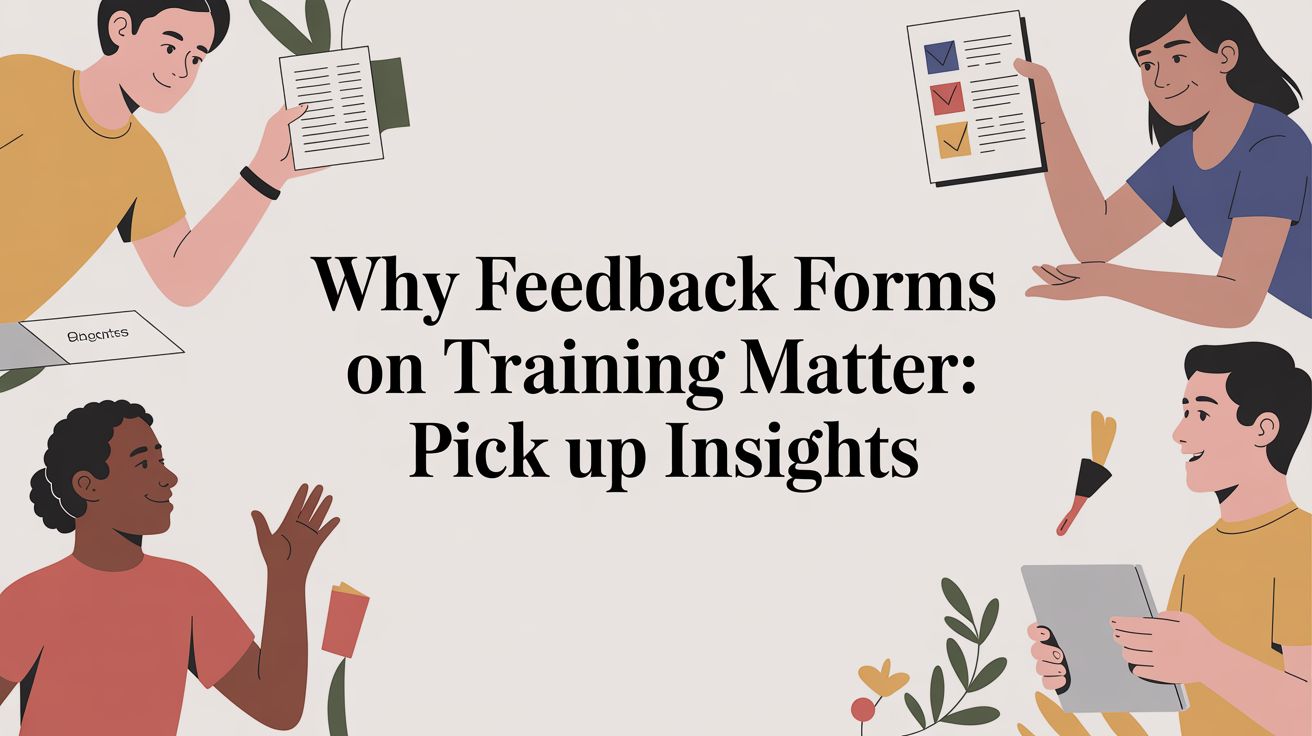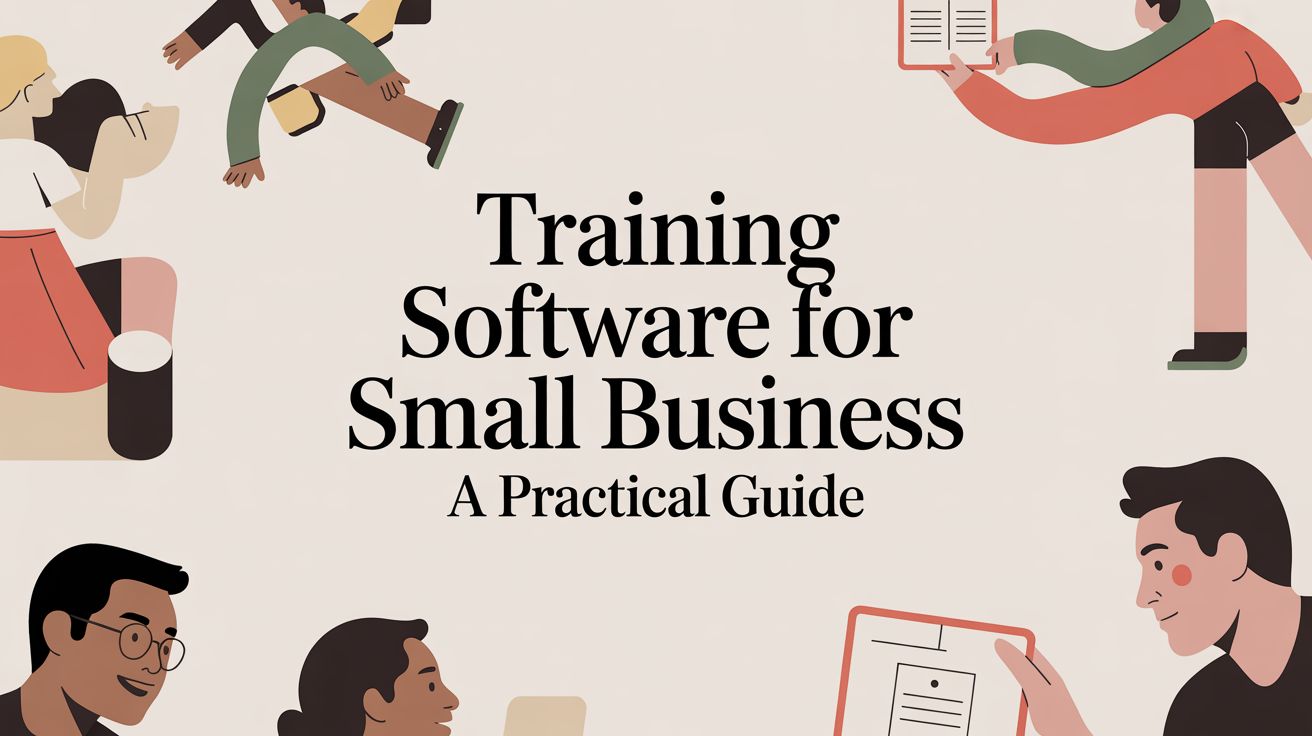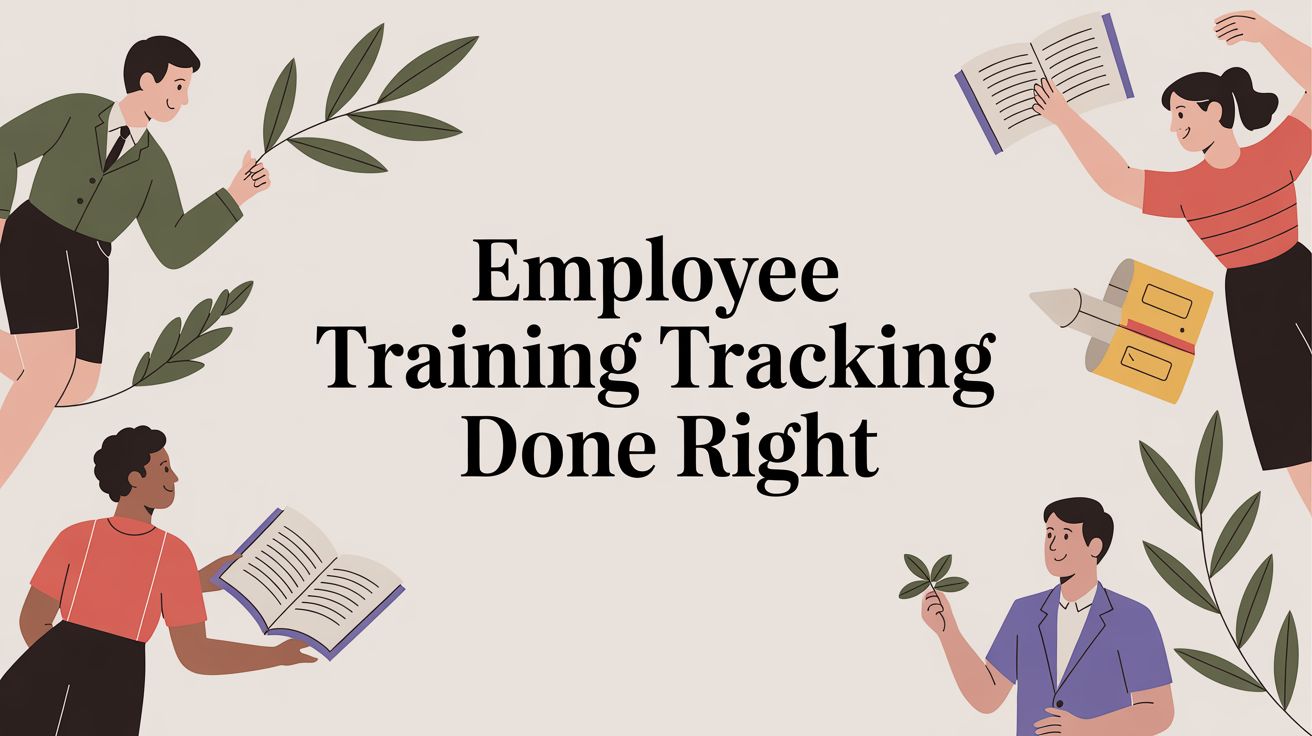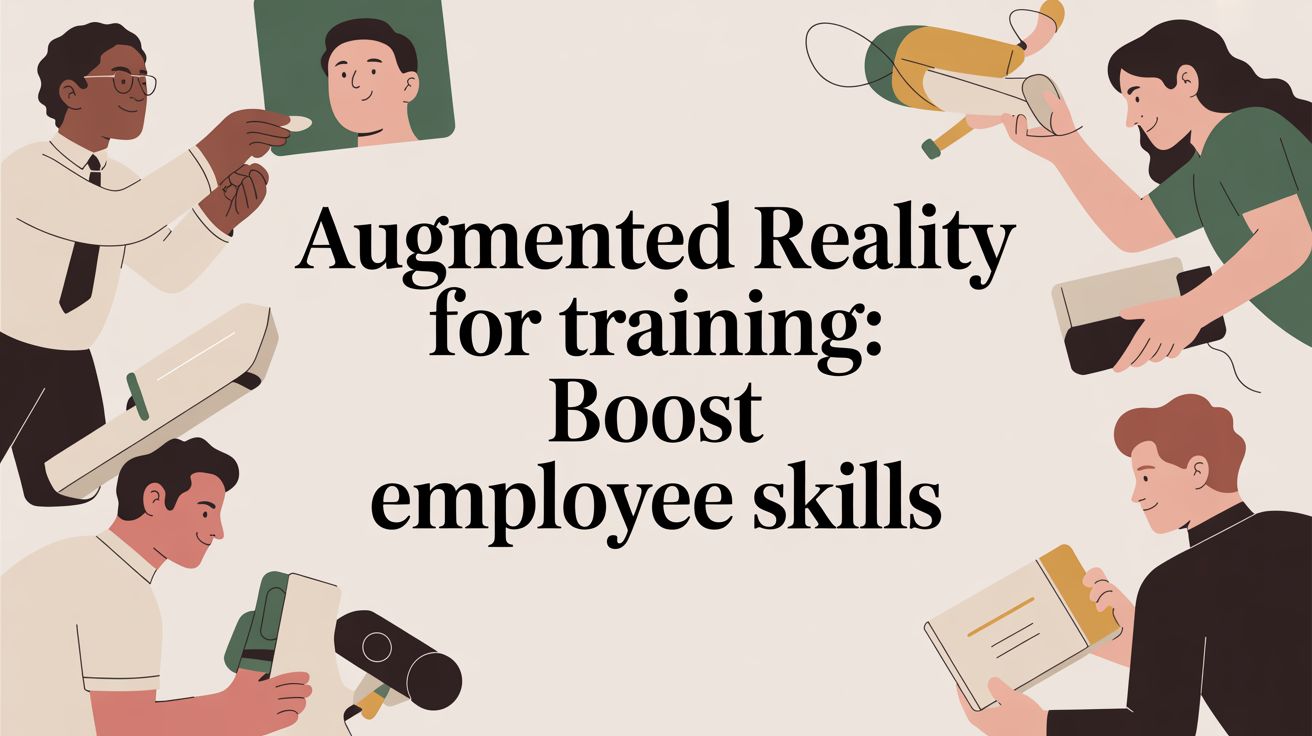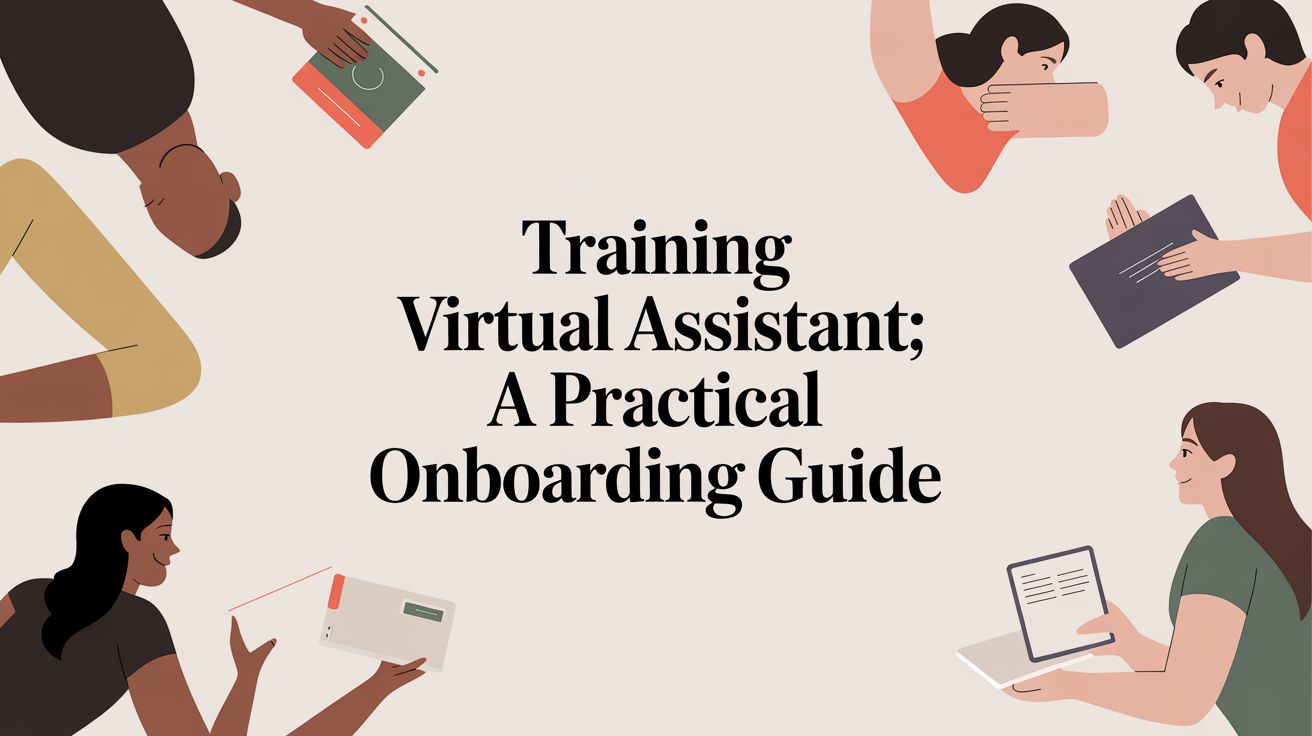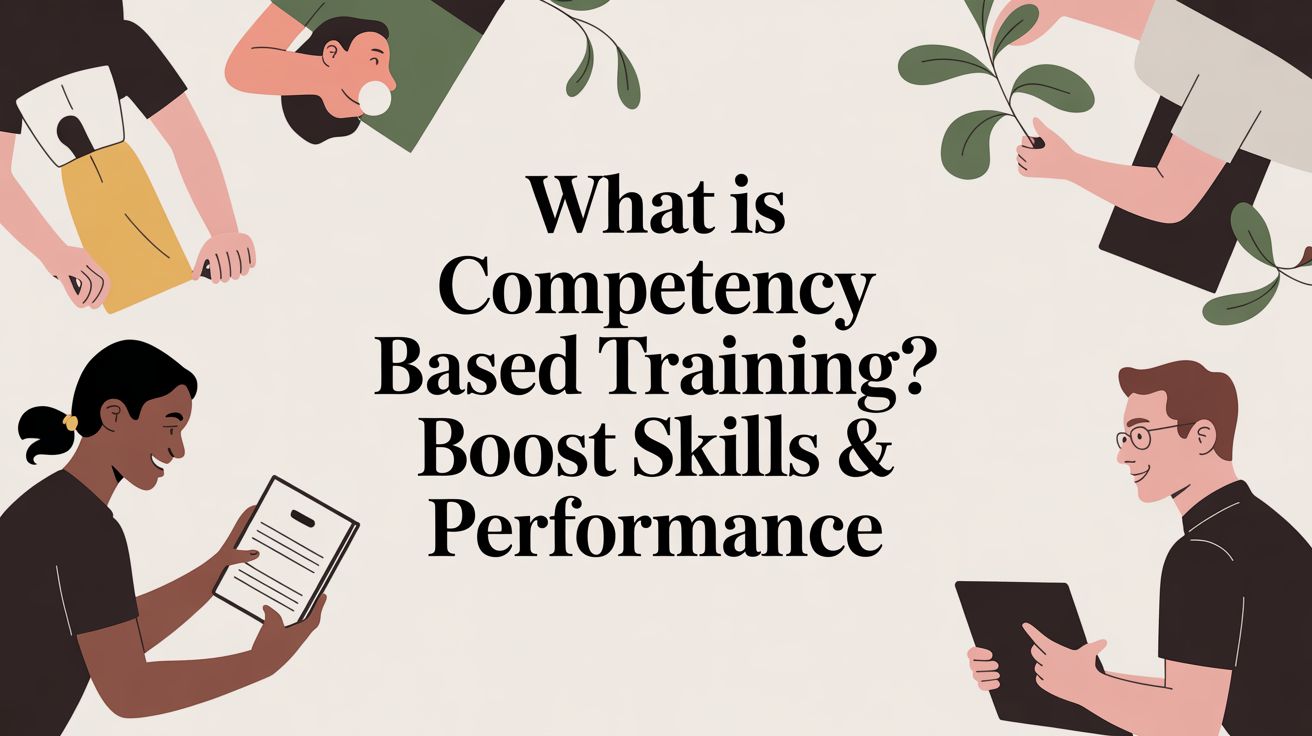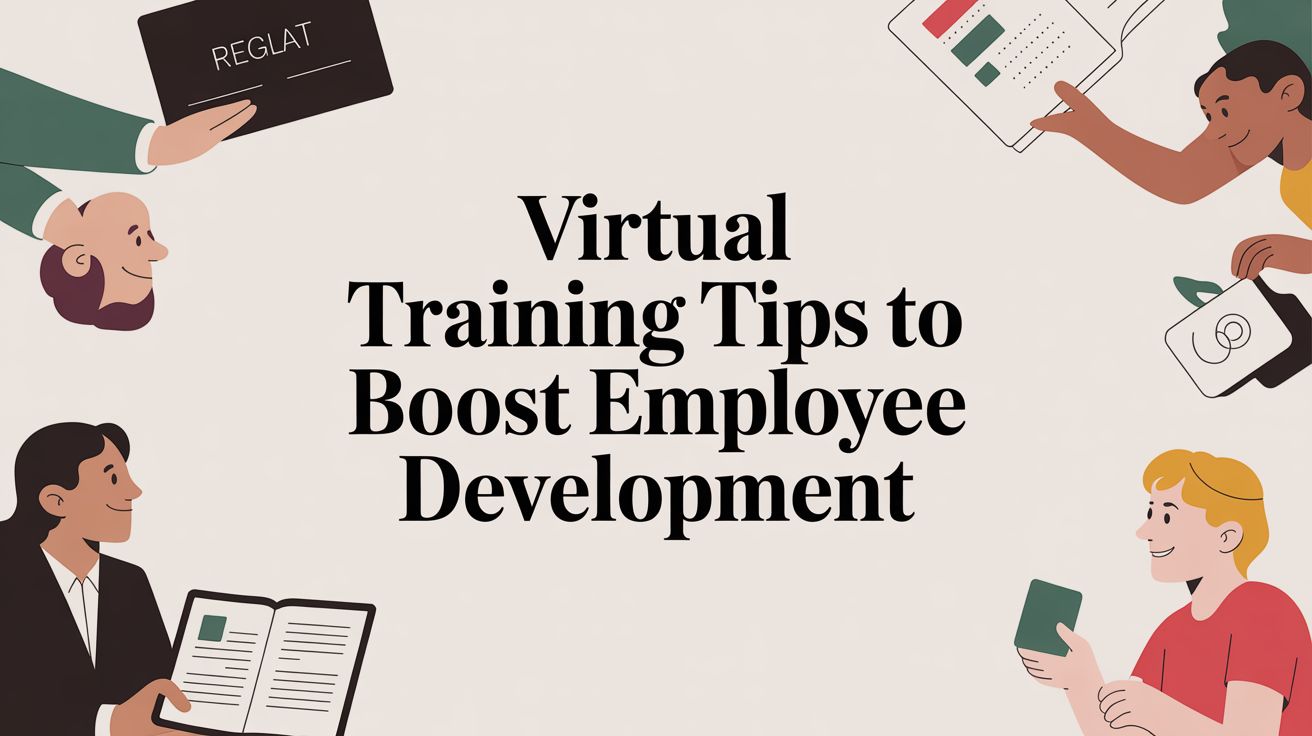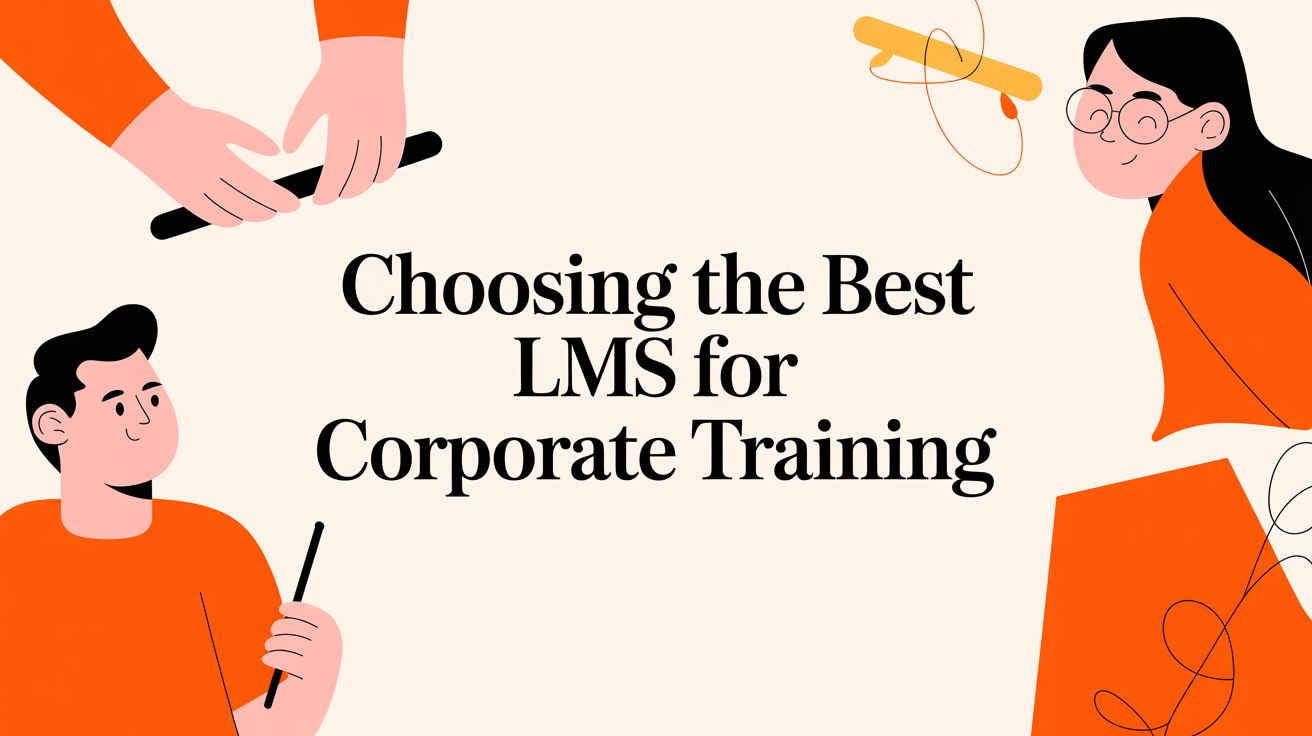10 Key Advantages of Learning Management System in 2025

10 Key Advantages of Learning Management System in 2025
In today's competitive corporate environment, delivering effective and measurable training is more critical than ever. As organizations scale, managing learning programs with spreadsheets, emails, and disparate tools quickly becomes a significant bottleneck. This manual approach leads to administrative overload, inconsistent delivery, and a frustrating lack of data to prove training impact. A Learning Management System (LMS) offers a centralized, powerful solution to these widespread challenges, but what are the tangible benefits that justify the investment?
This article moves beyond the surface-level claims to provide a comprehensive roundup of the 10 key advantages of a learning management system. We will explore how this technology fundamentally transforms training delivery from a logistical headache into a strategic asset. For each advantage, we'll delve into concrete business outcomes, real-world examples, and actionable implementation tips to help you maximize your return on investment.
While LMS platforms are invaluable for deploying asynchronous e-learning content, it's crucial to distinguish them from systems designed specifically for live, instructor-led training. To truly create high-quality training materials for your system, understanding how to create engaging training videos is a foundational skill. For managing the complex logistics of instructor-led sessions, from scheduling and resource allocation to invoicing and delegate management, a dedicated Training Management System (TMS) like Coursebricks is essential. Throughout this guide, we'll highlight where an LMS excels for self-paced content and where a TMS complements it to create a truly holistic and efficient training operation for all delivery formats.
1. Centralized Content Management
One of the most immediate and impactful advantages of a learning management system is its ability to provide centralized content management. An LMS acts as a single, authoritative repository for all your training materials, from eLearning modules and instructional videos to PDFs and presentation decks. This eliminates the chaos of scattered files on different drives, outdated versions circulating via email, and the constant struggle to ensure every learner and instructor has the most current information.
By creating a "single source of truth," you guarantee consistency and quality across your entire training program. Every user, regardless of their location or role, accesses the same approved materials. This systematic organization streamlines content updates, simplifies course creation, and significantly reduces administrative overhead.
Real-World Example: University of Florida & Blackboard
Large institutions like the University of Florida leverage systems like Blackboard to manage a massive library of academic content. Professors upload syllabi, lecture notes, and assignments to a central hub, ensuring every one of the university's tens of thousands of students accesses the correct, official course materials. This centralized model is crucial for maintaining academic integrity and operational efficiency at scale.
How to Implement and Track Success
To effectively centralize your content, it's crucial to establish clear governance from the start.
- Metrics to Track: Monitor content reuse rates to see if materials are being efficiently repurposed across courses. Track the time-to-update for critical content changes and measure the reduction in version control errors reported by instructors or learners.
- Actionable Tips:
Tip: Before migrating content, create a formal policy that outlines naming conventions, metadata tagging requirements, content review cycles, and archival procedures. This prevents the LMS from becoming as disorganized as the shared drives it replaced.
The Coursebricks Approach
For training providers focused on instructor-led training (ILT) and virtual instructor-led training (vILT), the challenge is not just managing static content but also the logistics around live sessions. While a traditional LMS centralizes asynchronous content, a training management system (TMS) like Coursebricks centralizes the operational data. Coursebricks manages schedules, instructor assignments, and learner registrations, ensuring the right people have access to the right live course materials at the right time, complementing the content repository of an LMS.
2. Comprehensive Tracking and Reporting
Beyond content storage, one of the most powerful advantages of a learning management system is its capacity for comprehensive tracking and reporting. An LMS automatically captures a wealth of data on learner activity, providing detailed insights into course completion rates, assessment scores, time spent on modules, and overall engagement. This data-driven approach moves training evaluation from guesswork to a precise science, allowing administrators to monitor program effectiveness and identify performance gaps in real-time.
By leveraging these analytics, training providers can prove the ROI of their programs, pinpoint which content resonates most with learners, and make informed decisions to optimize future courses. This systematic tracking is essential for compliance training, professional development, and any scenario where learner progress must be documented and verified. It transforms learning from a passive activity into a measurable business function.
Real-World Example: LinkedIn Learning Analytics
Platforms like LinkedIn Learning provide powerful analytics dashboards for corporate clients. A manager can instantly see which skills their team is developing, who the most engaged learners are, and which courses are most popular within the organization. This allows them to tailor learning paths to specific departmental needs and track progress against strategic goals, directly linking learning activities to business outcomes.
How to Implement and Track Success
To harness the full potential of LMS reporting, you need a clear strategy for what you want to measure and why. For a deeper dive into this, learn more about employee training tracking on coursebricks.io.
- Metrics to Track: Focus on course completion rates, average assessment scores, learner engagement time, and the correlation between training and job performance KPIs. Also, monitor drop-off rates to identify content or modules that may need improvement.
- Actionable Tips:
Tip: Don't use a one-size-fits-all report. Create distinct dashboards for different audiences: executives need high-level ROI and business impact data, managers need team progress and skill gap analysis, and instructors need engagement and assessment details to improve their courses.
The Coursebricks Approach
While an LMS excels at tracking asynchronous e-learning data, a training management system (TMS) like Coursebricks provides the critical reporting layer for instructor-led training (ILT) and virtual instructor-led training (vILT). Coursebricks tracks operational metrics that an LMS typically misses, such as course profitability, instructor utilization rates, registration numbers, and attendance records. This provides a complete 360-degree view of your entire training operation, combining the learning analytics from your LMS with the crucial business and logistical data from your TMS.
3. Scalability and Growth
A key long-term advantage of a learning management system is its inherent scalability. As your organization expands, an LMS is designed to grow with you, seamlessly supporting an increasing number of users, courses, and data without a degradation in performance. This is particularly true for cloud-based solutions, which provide elastic scalability to handle fluctuating training demands, such as seasonal hiring surges or new product launches.
This ability to scale prevents your training infrastructure from becoming a bottleneck to growth. Instead of overhauling your entire system every few years, a scalable LMS adapts to your needs, ensuring a consistent and reliable learning experience whether you're training ten employees or ten thousand. This future-proofs your investment and allows your training function to support, rather than hinder, business objectives.
Real-World Example: Amazon & Global Employee Onboarding
A prime example of scalability is Amazon's internal learning platform. With over 1.5 million employees globally, the company relies on a robust, cloud-based system to deliver consistent onboarding, compliance, and skills training across diverse roles and regions. This massive-scale deployment would be impossible without an infrastructure designed to handle millions of user interactions, course completions, and data points daily, demonstrating how an LMS enables growth for even the largest enterprises.
How to Implement and Track Success
To ensure your LMS can scale effectively, proactive planning and monitoring are essential.
- Metrics to Track: Monitor system response times during peak usage to identify potential bottlenecks. Track user and course growth rates against system capacity to forecast future needs. Measure the cost per user as you scale to ensure financial efficiency.
- Actionable Tips:
Tip: Prioritize a cloud-native or SaaS LMS for maximum scalability. These platforms handle the backend infrastructure, server maintenance, and capacity planning for you, allowing you to focus on content and learners rather than IT overhead.
The Coursebricks Approach
For training providers, scalability isn't just about handling more asynchronous learners; it's about managing a growing calendar of live training sessions. While an LMS scales to accommodate more self-paced content, a training management system (TMS) like Coursebricks scales your operational capacity for ILT and vILT. Coursebricks automates the scheduling, registration, and resource management for hundreds or thousands of live courses, ensuring your operational efficiency grows in lockstep with your business, a crucial aspect explored in many asynchronous learning platforms.
4. Enhanced Accessibility and Inclusion
A key advantage of a learning management system is its capacity to foster a more accessible and inclusive learning environment. Modern LMS platforms are designed to ensure content is available to all learners, regardless of physical ability, location, or the device they use. Features like mobile-first optimization, screen reader compatibility, closed captions for videos, and support for various content formats break down traditional learning barriers.
This commitment to accessibility is no longer optional; it's a fundamental requirement for effective and ethical training. An LMS provides the technical framework for creating inclusive learning experiences, ensuring every participant has an equal opportunity to engage with materials and succeed. By standardizing delivery on an accessible platform, you can reach a broader audience and comply with global accessibility standards.
Real-World Example: Canvas LMS & Accessibility Standards
Instructure's Canvas LMS is widely recognized for its robust accessibility features, which are used by millions of students globally. The platform is designed to comply with Web Content Accessibility Guidelines (WCAG) and Section 508 standards. It includes a built-in accessibility checker that helps instructors identify and fix issues in their content, such as low-contrast text or missing image alt-tags, directly within the course creation workflow. This proactive approach helps institutions maintain high accessibility standards across thousands of courses.
How to Implement and Track Success
To truly enhance accessibility, you must go beyond simply choosing an accessible platform and adopt inclusive design practices.
- Metrics to Track: Monitor learner feedback related to accessibility issues to identify common pain points. Track the percentage of video content with accurate captions and transcripts. Measure the number of accessibility errors flagged and fixed by content creators using built-in LMS tools.
- Actionable Tips:
Tip: Use WCAG guidelines as your benchmark and perform routine audits of your courses. Involve users with disabilities who rely on assistive technologies to test your content and platform, as their real-world feedback is invaluable for identifying practical barriers.
The Coursebricks Approach
For instructor-led and virtual instructor-led training, accessibility extends beyond digital content to the learning event itself. A training management system (TMS) like Coursebricks complements an LMS by managing the logistical aspects of inclusion. For example, Coursebricks allows administrators to track and manage specific learner needs, such as a request for a sign language interpreter or wheelchair-accessible seating for an in-person session. This ensures the entire learning journey, from registration to live delivery, is accessible and accommodating for every participant.
5. Personalized Learning Paths
A significant advantage of a modern learning management system is the capability to deliver personalized learning paths. Instead of a one-size-fits-all curriculum, an LMS can tailor educational journeys to individual needs, goals, and existing skill levels. This is achieved through adaptive technologies, AI-driven recommendations, and pre-assessment data, ensuring learners receive content that is most relevant and impactful for their development.
This customized approach dramatically increases learner engagement and knowledge retention. When content directly addresses a learner's specific skill gaps or career aspirations, motivation soars, and the training becomes a valuable tool rather than a mandatory chore. This personalization transforms learning from a passive activity into an active, goal-oriented experience.
Real-World Example: LinkedIn Learning & AI Recommendations
Platforms like LinkedIn Learning excel at personalization by leveraging a massive dataset of user skills, job roles, and career trajectories. Its AI engine analyzes a user's profile and viewing history to suggest relevant courses, creating a dynamic learning path that evolves with their career. For instance, a software developer showing interest in machine learning will automatically be recommended a sequence of courses, from foundational concepts to advanced applications, creating a highly effective and self-directed learning journey.
How to Implement and Track Success
To roll out effective personalization, you must start with a clear understanding of the skills and competencies your training addresses.
- Metrics to Track: Measure course completion rates for personalized vs. generic paths. Monitor learner satisfaction scores (NPS) and track skill acquisition velocity by comparing pre and post-assessment results. A reduction in learner drop-off rates is another key indicator of success.
- Actionable Tips:
Tip: Before building paths, clearly define the skills and competencies required for different roles or proficiency levels. Use this framework as the backbone for your personalization rules and content tagging, ensuring recommendations are accurate and meaningful.
The Coursebricks Approach
While an LMS excels at personalizing asynchronous, self-paced content, many critical skills are best developed through live, interactive sessions. A training management system (TMS) like Coursebricks complements the LMS by personalizing the logistics of instructor-led training (ILT) and virtual instructor-led training (vILT). Coursebricks allows you to manage complex schedules for different learner cohorts, track prerequisites for advanced workshops, and ensure learners are registered for the live sessions that align with their specific development path, bridging the gap between personalized digital content and essential hands-on training.
6. Significant Cost Savings
One of the most compelling advantages of a learning management system is its direct impact on the bottom line through significant cost savings. By shifting training online, organizations drastically reduce or eliminate expenses associated with traditional instructor-led sessions, including instructor fees, venue rentals, and employee travel and accommodation. An LMS also cuts costs by automating administrative tasks and enabling the reuse of digital content, maximizing the value of every training asset.
This digital-first approach not only reduces direct expenses but also minimizes the indirect cost of lost productivity, as employees can complete training at their own pace without lengthy absences from their roles. The long-term return on investment (ROI) is driven by both reduced operational overhead and enhanced workforce efficiency, making an LMS a financially sound strategic investment.
Real-World Example: Deloitte & IBM
Leading global firms have demonstrated massive ROI from LMS adoption. Deloitte reported saving millions annually by moving its extensive corporate training programs online, reducing travel and logistical costs dramatically. Similarly, IBM successfully cut its training expenses by over 35% by leveraging a cloud-based LMS, proving that even at a massive scale, the financial benefits are substantial and measurable.
How to Implement and Track Success
To ensure your LMS delivers on its promise of cost savings, you need a clear strategy for implementation and measurement.
- Metrics to Track: Calculate the Total Cost of Ownership (TCO) versus the cost of traditional training. Monitor the reduction in travel and accommodation expenses per employee and track the decrease in administrative hours spent on scheduling and enrollment.
- Actionable Tips:
Tip: Before purchasing, calculate the full cost, including subscription fees, implementation, content creation, and ongoing administration. Compare this to your current training budget to create a clear business case and set realistic ROI expectations.
The Coursebricks Approach
For training providers offering instructor-led and virtual instructor-led training, cost savings come from operational efficiency. A training management system (TMS) like Coursebricks is designed to automate the high-cost administrative tasks tied to live training. Coursebricks streamlines scheduling, resource allocation, and registrations, reducing the manual labor required to manage complex ILT/vILT programs. By optimizing logistics, it allows providers to run more courses with fewer administrative staff, directly reducing operational costs and improving profitability, which is a crucial consideration when choosing from the best learning management systems for small business.
7. Compliance and Regulatory Management
For organizations in highly regulated industries, one of the most critical advantages of a learning management system is its ability to streamline and automate compliance. An LMS provides a robust framework for delivering, tracking, and documenting mandatory training, ensuring your organization adheres to legal and industry standards like HIPAA, GDPR, SOX, and FDA regulations. This transforms compliance from a logistical nightmare of spreadsheets and manual records into a systematic, auditable process.
With an LMS, you can assign required courses based on roles, set automatic recertification reminders, and generate detailed reports in seconds. This creates an unassailable audit trail, proving that every employee has completed necessary training and protecting the organization from costly penalties, legal liabilities, and reputational damage.
Real-World Example: Healthcare Organizations & HIPAA
Healthcare providers must ensure every staff member completes annual Health Insurance Portability and Accountability Act (HIPAA) training. Using an LMS like Docebo, a hospital can automatically enroll all new hires in the required HIPAA module and schedule annual recertification for existing staff. The system tracks completion, records test scores, and archives digital certificates, providing instant proof of compliance during an audit.
How to Implement and Track Success
To leverage an LMS for compliance, a proactive and structured approach is essential.
- Metrics to Track: Monitor training completion rates for mandatory courses, the percentage of employees with current certifications, and the time-to-generate-audit-reports. A key success indicator is a zero-incident rate for compliance breaches related to inadequate training.
- Actionable Tips:
Tip: Before configuring your LMS, create a comprehensive map of all applicable regulations and the specific training they mandate for different employee roles. This ensures your course assignments are precise and your compliance framework is complete from day one.
The Coursebricks Approach
While an LMS is ideal for managing asynchronous compliance e-learning, many certifications require live, instructor-led training (ILT) or virtual instructor-led training (vILT). This is where a training management system (TMS) like Coursebricks provides essential support. Coursebricks automates the scheduling, registration, and resource management for these mandatory live sessions. It ensures that instructors are properly assigned, physical or virtual classrooms are booked, and learners receive timely communications, creating a seamless and auditable workflow for the live components of your compliance program.
8. Consistency and Standardization
A critical advantage of a learning management system is its ability to enforce consistency and standardization across all training initiatives. An LMS ensures that every learner, whether in the main office or a remote satellite branch, receives the same high-quality, on-brand training content. This eliminates the "trainer drift" and regional variations that can dilute the effectiveness of a program and lead to inconsistent knowledge and skill application.
By standardizing learning pathways, assessments, and content delivery, organizations can establish a reliable baseline for performance and quality. This consistency is not just about branding; it's about guaranteeing that core competencies, safety procedures, and product knowledge are taught uniformly, reducing errors and improving overall operational excellence.
Real-World Example: Starbucks & Standardized Barista Training
Global retail giant Starbucks relies on its LMS to deliver standardized training to hundreds of thousands of baristas across more than 35,000 stores worldwide. This ensures that the "Starbucks Experience," from drink preparation to customer service, is consistent regardless of location. The LMS delivers modules on everything from espresso machine operation to company culture, creating a uniform standard of excellence that is crucial to its brand identity.
How to Implement and Track Success
To leverage an LMS for standardization, you must build a framework that supports and enforces it.
- Metrics to Track: Monitor assessment score variance across different regions or departments to identify inconsistencies. Track completion rates for mandatory compliance training and measure the number of support tickets related to procedural confusion.
- Actionable Tips:
Tip: Develop standardized course templates within your LMS that include pre-defined structures, branding elements, and instructional formats. This ensures all course creators start from a consistent, quality-assured baseline, dramatically speeding up development while maintaining brand integrity.
The Coursebricks Approach
For instructor-led training (ILT) and virtual instructor-led training (vILT), standardization extends beyond content to operational delivery. A traditional LMS standardizes eLearning, but a training management system (TMS) like Coursebricks standardizes the entire logistical process. Coursebricks ensures consistency in how courses are scheduled, how instructors are assigned based on qualifications, and how learners are registered and communicated with. This operational standardization guarantees every live training session, whether in-person or virtual, is executed with the same level of professional consistency, complementing the content standardization provided by an LMS.
9. Seamless System Integrations
Another of the core advantages of a learning management system is its ability to integrate seamlessly with other critical business software. Modern LMS platforms are no longer isolated islands of data; they function as part of a connected enterprise ecosystem, syncing with HR systems, CRMs, and talent management platforms. This connectivity, often powered by robust APIs, automates data flow, eliminates manual data entry, and creates a unified view of employee and customer development.
By connecting your LMS to other systems, you can automate user provisioning, sync training completion data with performance reviews, and link sales training directly to CRM activity. This creates a powerful, data-driven feedback loop where learning outcomes are directly tied to business results, transforming training from a cost center into a strategic growth driver.
Real-World Example: Salesforce & Trailhead
Salesforce's learning platform, Trailhead, is a prime example of deep integration. It connects directly with the Salesforce CRM, allowing companies to assign training modules based on an employee's role, performance, or sales pipeline data. When a sales rep completes a course on a new product, that achievement can be logged and correlated with their subsequent sales performance, providing clear ROI on training investments.
How to Implement and Track Success
To leverage integrations effectively, you need a strategic approach that prioritizes high-impact connections.
- Metrics to Track: Measure the reduction in manual data entry hours for administrators, track the time-to-competency for new hires by syncing LMS and HRIS data, and monitor the correlation between training completion rates and key business KPIs (e.g., sales quotas in your CRM).
- Actionable Tips:
Tip: Instead of trying to connect everything at once, start with the integration that solves the biggest pain point. For many, this is connecting the LMS to an HRIS (like Workday or SAP SuccessFactors) to automate user creation and de-provisioning.
The Coursebricks Approach
For providers specializing in instructor-led training, integration extends beyond user data to operational logistics. A training management system (TMS) like Coursebricks is built with an API-first architecture, designed to connect the operational side of training (schedules, instructors, registrations) with the rest of your business tech stack. For instance, you could integrate Coursebricks with your CRM to automatically enroll a new client in a scheduled onboarding session or connect it to your accounting software to automate invoicing upon course completion, ensuring a smooth, end-to-end operational workflow.
10. Advanced Analytics and Data Insights
Beyond simple completion rates, a key advantage of a learning management system is its capacity for advanced analytics and data insights. Modern LMS platforms go far beyond basic reporting to provide deep insights into learning patterns, training effectiveness, and emerging skill gaps. Using AI and machine learning, these systems can predict learning outcomes, identify at-risk learners before they fall behind, and help optimize training investments for maximum business impact.
This data-driven approach transforms training from a cost center into a strategic business function. By connecting learning data with performance metrics, you can directly demonstrate ROI, justify budget requests, and align training initiatives with core organizational goals. This level of insight allows for proactive, rather than reactive, management of your entire learning ecosystem.
Real-World Example: Docebo & AI-Powered Analytics
Platforms like Docebo leverage AI through their Docebo Intelligence suite to automate and enhance learning analytics. The system can analyze user engagement to identify which content formats are most effective, flag learners who are disengaging, and even suggest relevant courses based on an individual's learning history and job role. This predictive capability helps administrators intervene early and personalize learning paths at scale.
How to Implement and Track Success
To leverage advanced analytics, you must move from data collection to data interpretation.
- Metrics to Track: Focus on metrics like learner progression velocity (how quickly learners move through content), skill gap analysis before and after training, and correlation between course completion and business KPIs (e.g., sales numbers, customer satisfaction scores). Explore our guide on how to measure training effectiveness for more ideas.
- Actionable Tips:
Tip: Don't use a one-size-fits-all report. Create customized dashboards for different stakeholders. An executive might want to see ROI and business impact, while a manager needs to see team-specific progress and skill development.
The Coursebricks Approach
For instructor-led and virtual instructor-led training, the most critical data points revolve around operational efficiency. A traditional LMS reports on content consumption, but a training management system (TMS) like Coursebricks provides analytics on business operations. Coursebricks delivers insights into course profitability, instructor utilization rates, and resource allocation efficiency. By analyzing this operational data, training providers can optimize schedules, price courses effectively, and ensure their live training business is running at peak financial performance, complementing the learner-focused analytics of an LMS.
Top 10 LMS Advantages Comparison
| Feature | Implementation complexity | Resource requirements | Expected outcomes | Ideal use cases | Key advantages |
|---|---|---|---|---|---|
| Centralized Content Management | Medium — initial migration and governance setup | Content migration effort, storage, content curators, creator training | Consistent, up-to-date content; reduced duplication | Organizations with many courses or version-control needs | Single source of truth; easier updates and content reuse |
| Comprehensive Tracking and Reporting | Medium–High — dashboards, KPI definition, integrations | Analytics tools, data analysts, privacy controls, reporting templates | Real-time learner insights; automated compliance and performance reports | Regulated industries, large learner bases, managers needing visibility | Data-driven decisions; automated reporting; ROI visibility |
| Scalability and Growth | Medium — cloud architecture and capacity planning | Cloud infrastructure, scaling budget, IT/ops support | Elastic performance with growing users and content | Rapidly growing, global organizations, high concurrency needs | Future-proof scaling; flexible cost models; global reach |
| Enhanced Accessibility and Inclusion | Medium — WCAG compliance and assistive testing | Accessibility experts, captioning/transcripts, design adjustments | Broader access, legal compliance, improved completion rates | Diverse learner populations, public institutions, education | Inclusive access; meets accessibility standards; mobile/assistive support |
| Personalized Learning Paths | High — adaptive algorithms and competency mapping | Extensive content variants, learner data, ML/AI resources, analysts | Higher engagement and faster skill attainment; tailored learning journeys | Career development, skills-based training, individualized programs | Customized recommendations; improved outcomes; reduced time-to-competency |
| Significant Cost Savings | Medium — phased implementation and ROI tracking | Initial implementation investment, content development, analytics | Lower training costs; measurable ROI (typically 18–36 months) | Organizations with high training volume or travel costs | Reduced per-learner cost; fewer travel/instructor expenses; predictable costs |
| Compliance and Regulatory Management | High — regulatory mapping and audit trail design | Legal/regulatory experts, reporting systems, frequent updates | Reduced compliance violations; streamlined audits and certification tracking | Healthcare, finance, pharma, and other regulated sectors | Automated compliance tracking; audit readiness; mandatory enforcement |
| Consistency and Standardization | Medium — governance, templates and QA workflows | Content standards, templates, instructional designer training | Uniform competency levels; consistent branding and training quality | Franchises, large distributed enterprises, standardized operations | Standardized delivery; quality control; easier employee mobility |
| Seamless System Integrations | High — API work, SSO and data synchronization | Developers, integration middleware, security and API governance | Unified data flows; automated provisioning; fewer manual processes | Enterprises with HR/CRM/ERP ecosystems and complex workflows | Eliminates silos; improves data accuracy; enables cross-system analytics |
| Advanced Analytics and Data Insights | High — data pipelines, ML models and dashboards | Large datasets, data scientists, analytics platform, model maintenance | Predictive insights, skill-gap identification, optimized training ROI | Organizations optimizing learning impact and strategic decisions | Predictive capabilities; quantifies ROI; reveals training-to-business impact |
Choosing the Right System for Your Training Needs
The journey through the numerous advantages of a learning management system has painted a clear picture. From creating a single source of truth with centralized content management to unlocking deep insights through advanced analytics, an LMS is a powerful engine for delivering asynchronous, self-paced e-learning. It provides the framework for personalized learning paths, ensures content consistency, and simplifies compliance management, making it an indispensable tool for organizations focused on scalable online course delivery.
However, for training providers whose core business revolves around instructor-led training (ILT) and virtual instructor-led training (VILT), relying solely on an LMS is like trying to manage a bustling airport with only a library catalog. An LMS excels at managing content, but it falls short when it comes to the complex, real-time logistics of live training operations. This is where the distinction between a Learning Management System (LMS) and a Training Management System (TMS) becomes critically important.
The LMS and TMS Symbiosis: A Holistic Approach
While an LMS manages the learning, a TMS like Coursebricks manages the business of training. The real-world challenges for training providers extend far beyond content hosting. They involve a dynamic web of administrative tasks that are the lifeblood of successful live training programs:
- Scheduling and Resource Management: Coordinating instructor availability, booking physical or virtual venues, and managing equipment.
- Registration and E-commerce: Handling complex registrations, processing payments securely, and managing discounts or group bookings.
- Communication and Logistics: Automating pre-course reminders, sending post-course materials, and managing delegate communications.
- Operational Reporting: Tracking enrollment numbers, revenue per course, instructor performance, and resource utilization.
An LMS is not built to handle these operational complexities. A purpose-built TMS, on the other hand, is designed specifically to automate and streamline them. This is why the ultimate solution is not an "either/or" choice but a strategic integration of both systems.
Pro Tip: Think of it this way: Your LMS is your digital library, holding all your valuable e-learning resources. Your TMS is your operations hub, managing the live events, workshops, and seminars where that knowledge is brought to life by expert instructors.
Your Actionable Next Steps
To harness the full spectrum of benefits available, you need to evaluate your unique business model. Here is a clear path forward:
- Audit Your Training Delivery: First, categorize your offerings. What percentage of your business is asynchronous e-learning versus live, instructor-led courses? Understanding this mix is the first step toward identifying your primary technology need.
- Identify Your Biggest Bottlenecks: Are your administrators spending most of their time manually tracking registrations and payments? Or is your biggest challenge standardizing e-learning content? Pinpointing your primary pain points will clarify whether you need an LMS, a TMS, or both.
- Explore a Purpose-Built TMS: If a significant portion of your revenue comes from ILT or VILT, investigate how a TMS can transform your operations. Explore how platforms like Coursebricks can automate scheduling, simplify registration, and provide a seamless e-commerce experience for your customers. You can learn more about its features tailored for training providers here.
- Plan for Integration: The most powerful training ecosystems use an LMS and a TMS in tandem. Your TMS manages the end-to-end administration of a blended learning program, while the LMS hosts the prerequisite e-learning modules. Research systems that offer robust APIs or pre-built integrations to create a seamless experience for both your staff and your learners.
By embracing this dual-system strategy, you leverage the distinct advantages of a learning management system for what it does best, while simultaneously empowering your business with a robust TMS to scale your high-value, instructor-led programs. This integrated approach doesn't just make your operations more efficient; it unlocks new potential for growth, profitability, and delivering an unparalleled learning experience that sets you apart from the competition.
Ready to explore Coursebricks?
Manage training programs, automate emails, and generate detailed reports — all in one place.



